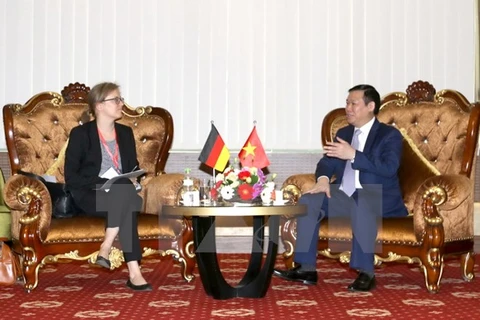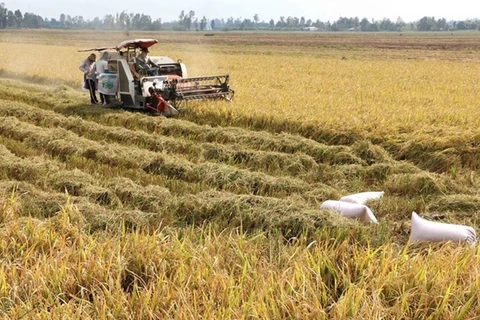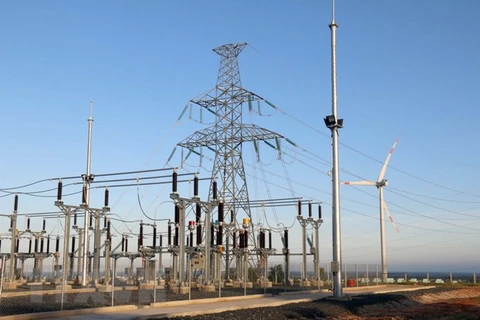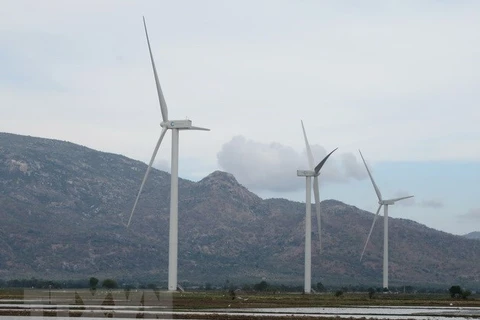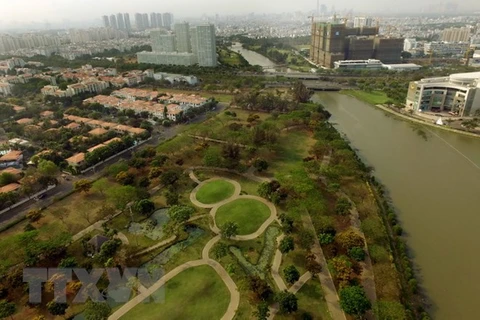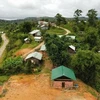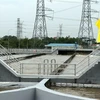 A photo displayed at the exhibition depicts children playing by a sugarcane farm. There are 11 sugar mills across the country generating biomass energy to sell to the grid (Photo courtesy of GIZ)
A photo displayed at the exhibition depicts children playing by a sugarcane farm. There are 11 sugar mills across the country generating biomass energy to sell to the grid (Photo courtesy of GIZ) HCM City (VNS/VNA) - A photo exhibition entitled “Biomass energy-for a green future” took place from July 18-21 at the Saigon Exhibition Convention Centre in HCM City’s District 7.
The exhibition, organised by the Deutsche Gesellschaft für Internationale Zusammenarbeit (GIZ) Climate Finance Readiness Programme of Germany, aims to manifest the immense potential of renewable energy development, especially biomass energy in Vietnam.
About 20 photos by photographers from across the country are displayed at the exhibition featuring individuals, organisations and localities which are now making a great contribution to the cause of promoting clean and eco-friendly energy sources in Vietnam.
Each photo tells story about efforts in improving society’s awareness of the importance of biomass energy in helping reduce the impacts of climate change as well as maintaining sustainable agricultural development.
Vietnam is one of the most rapidly growing economies in Southeast Asia. This rapid growth goes hand-in-hand with a rising demand for electricity, which is set to increase exponentially by the year 2020, a report from the GIZ said.
Recent scientific research has shown that by the end of 2014, the country could have exploited approximately 20.67 million tonnes of wood energy and 52.91 million tons of agriculture residues, mainly rice husk, straw and bagasse.
Biomass energy, which has the potential to utilise millions of tons of agricultural residue including bagasse, rice husk and woods, plays an important role in generating clean electricity and contributing to rural development while at the same time reducing carbon emissions and mitigating climate change impacts.-VNS/VNA
VNA
